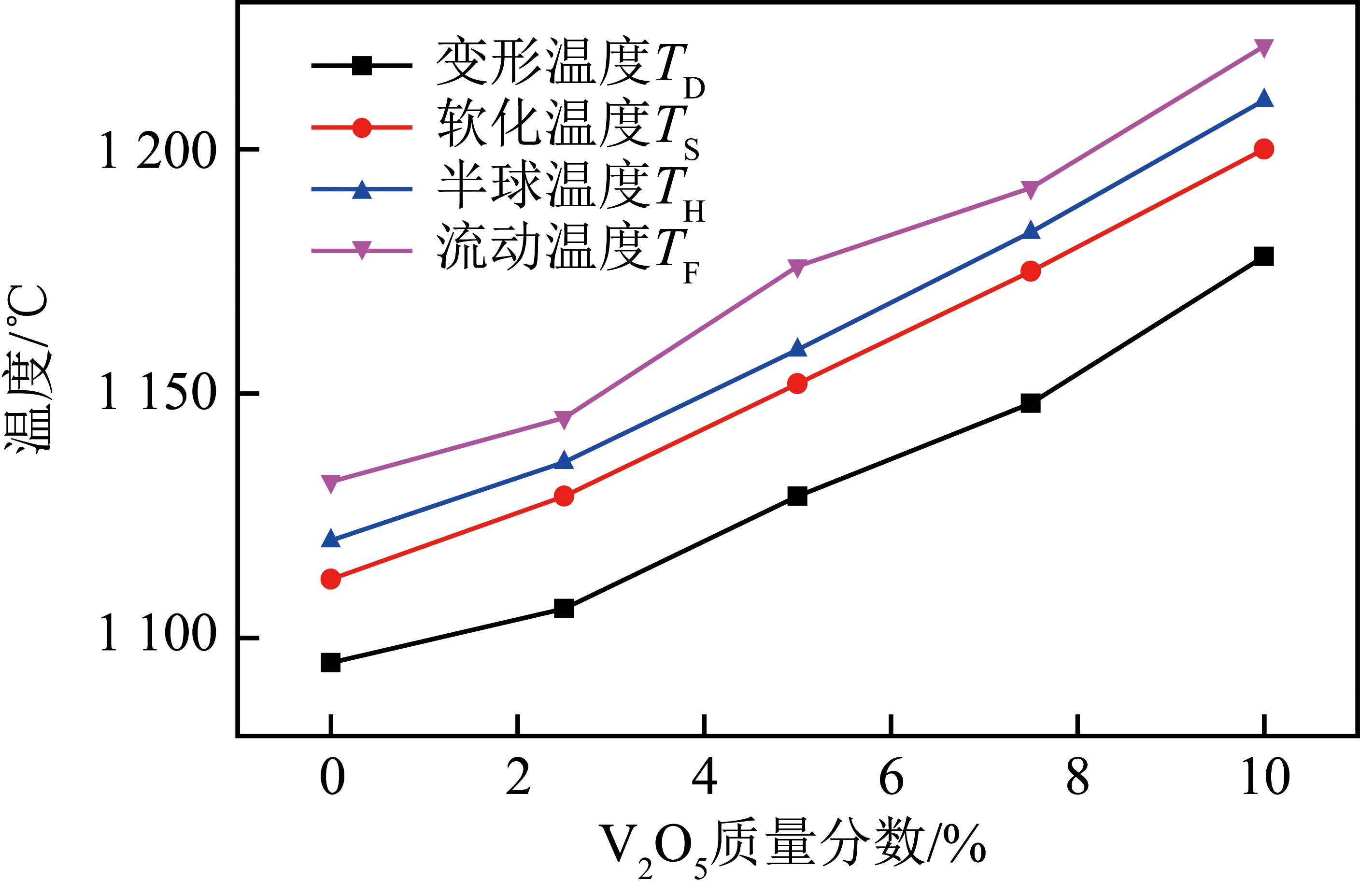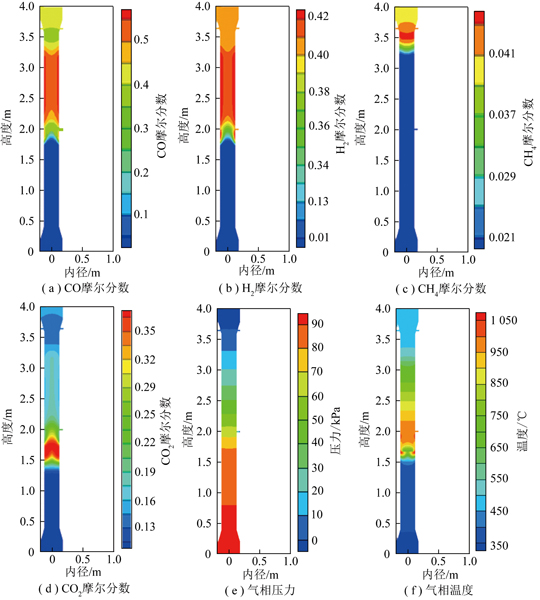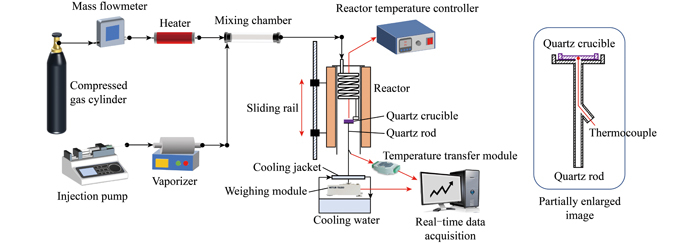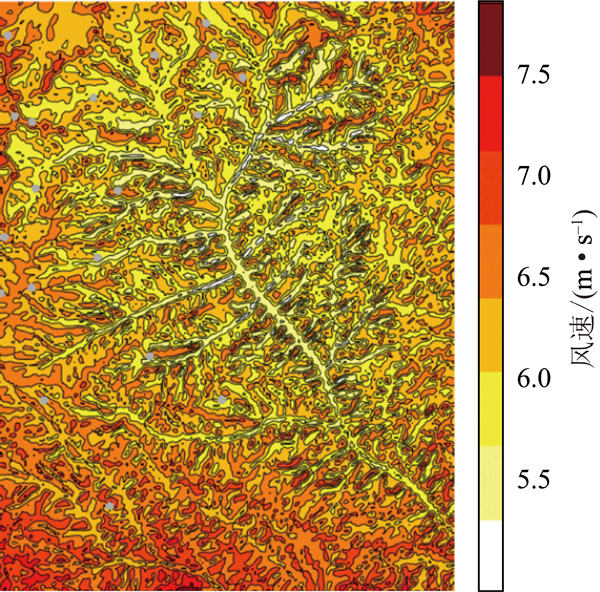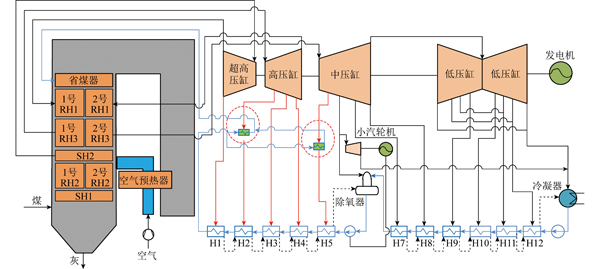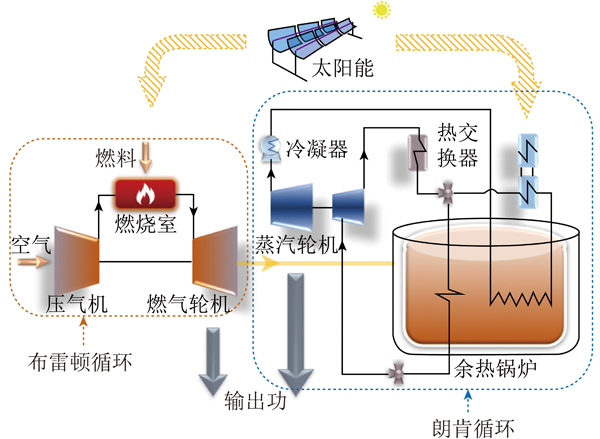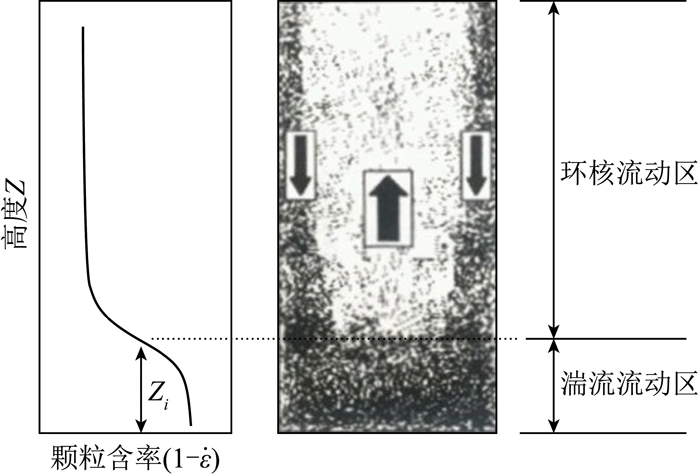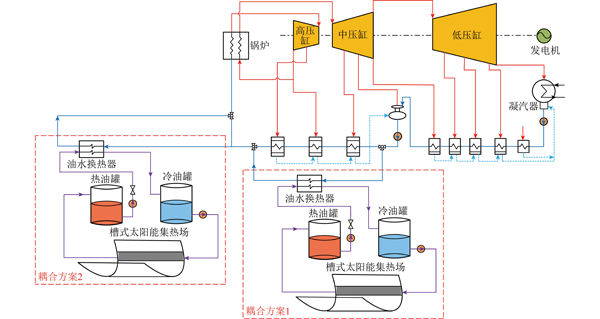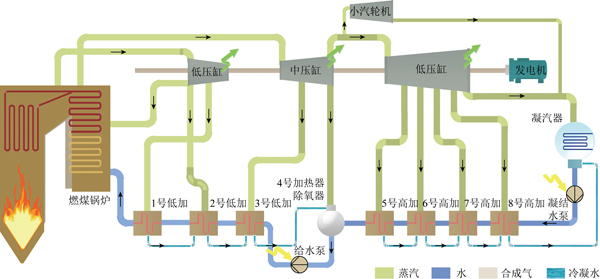太阳能热与燃煤电站互补发电技术综述

Review on solar aided coal-fired power generation
0 引 言
能源消耗带来的环境问题日益严重,在此背景下,可再生能源发电技术快速发展[1],太阳能光热发电技术因功率输出稳定、调峰性能良好等优点而备受关注[2]。但由于光热发电需配置大规模储热,发电成本居高不下[3]。当前光热电站与燃煤机组均为朗肯循环[4],将二者集成可共用一套汽轮机系统,具有一定可行性。我国西部地区太阳能资源和煤炭资源丰富,因此从地域分布看将燃煤机组与光热系统集成吻合性良好[5]。与纯太阳能热发电系统相比,太阳能热与燃煤机组互补集成系统可降低初投资及发电成本;与燃煤机组相比,可减小燃煤量和CO2排放,促进火电机组节能减碳[6-7]。自20世纪70年代,ZOSCHAK等[8]首次提出太阳能辅助燃煤发电系统(SAPG)的概念后,多位学者针对该技术展开深入探索,包括系统集成方案、系统热力性能研究、系统运行控制策略分析以及系统经济性能分析等。
1 太阳能热与燃煤机组发电集成方案
与燃煤机组互补集成的光热系统主要为槽式和塔式。因二者太阳能集热温度不同,使其与燃煤机组的集成部位有所差别。
1.1 槽式SAPG系统集成方案
槽式光热系统内的导热工质一般为导热油,工作温度相对较低,最高温度通常不超过400 ℃,因此槽式集热场与燃煤机组的集成部位一般在燃煤机组的回热系统侧,即利用太阳能热代替回热抽汽加热锅炉给水。目前槽式SAPG系统的主要耦合方案如图1所示。
1)耦合方案1:槽式太阳能替代回热抽汽加热锅炉给水[9-10]。该耦合方案中用槽式太阳集热场代替回热抽汽加热锅炉给水,给水泵给水一部分被携带太阳能的导热油加热至所需温度,另一部分给水进入高压加热器,由高压加热器抽汽加热至所需温度,最后2股给水在高压加热器出口处汇合进入锅炉参与后续循环。被替代的高压加热器抽汽返回汽轮机继续做功,因此在汽轮机组输出功率不变的情况下,可节省燃煤机组煤量。
2)耦合方案2:槽式太阳能加热锅炉给水[11]。给水经高压加热器抽汽加热后,进入集热场继续被太阳能加热,而后从集热场中流出进入锅炉参与后续循环。在该集成方式中,进入锅炉内的给水温度相比原燃煤机组有所提高,而锅炉出口蒸汽参数不变,节约了一定煤量。该集成方案优点为:结构相对简单,除槽式太阳集热系统和燃煤发电系统连接部分外,系统其他部分均保持原有结构。然而由于进入锅炉内的给水参数发生变化,因此对锅炉效率产生一定影响。除上述2个方案外,槽式SAPG系统还有其他耦合方案,均相似,故不再赘述。

图1 槽式SAPG系统集成方案1和2系统示意
Fig.1 System diagram of trough type SAPG system integration schemes 1 and 2
1.2 塔式SAPG系统集成方案
塔式光热系统集热场内的导热工质一般为熔融盐,熔融盐工作温度较高(600 ℃左右),因此塔式集热场与燃煤机组的集成方案较多,包括塔式太阳能加热再热蒸汽(替代全部/部分锅炉再热器)、替代回热抽汽加热锅炉给水或几种耦合方式组合等,具体为:
1)耦合方案1:塔式太阳能热替代高温回热抽汽加热给水[11]。该方案与槽式集热场耦合方案1相似,区别在于集热场类型由槽式变为塔式(图2)。
2)耦合方案2:塔式太阳能热加热锅炉给水[11]。该耦合方式与槽式太阳能耦合方案2类似,利用盐-水换热器将太阳能热传递至锅炉给水,吸收热量后的给水进入锅炉省煤器和过热器吸收热量达到所需温度(图2)。

图2 塔式SAPG系统集成方案1和2系统示意
Fig.2 System diagram of tower type SAPG system integration schemes 1 and 2
3)耦合方案3:塔式太阳能加热再热蒸汽和锅炉给水[12]。该耦合系统中,太阳能热首先用于加热再热冷端的蒸汽,蒸汽从高压缸流出后进入集热场的盐/蒸汽换热器内,被携带太阳能的熔融盐加热,而后进入再热器继续吸热直至达到所需参数。从盐/蒸汽换热器流出的熔融盐(温度较低)进入盐/水换热器中,用于加热高压加热器出口的给水,给水被太阳能加热后进入锅炉参与后续循环(图3)。

图3 塔式SAPG系统集成方案3和4系统示意
Fig.3 System diagram of tower type SAPG system integration schemes 3 and 4
4)耦合方案4:塔式太阳能加热再热蒸汽并替代高压加热器回热抽汽[13]。该耦合方案与塔式耦合方案3类似,即将太阳能热分成高低温2部分,分别加热再热蒸汽和锅炉给水。二者区别在于该耦合方式中,一段或多段高压加热器回热抽汽被太阳能部分或全部取代,被替代的高压加热器抽汽可在汽轮机内继续做功,在主蒸汽流量不变的情况下,增加电站发电量(图3)。
SAPG系统集成方案较多,不局限于上述几种。总体来看,选取方案主要遵循3个原则:① 系统简单,减少对燃煤机组系统的改造;② 提升SAPG系统的热力性能和经济性能;③ 满足提升系统调峰能力等特殊需求。
2 太阳能热与燃煤机组发电系统技术
2.1 系统性能
热力性能是反映系统优劣的重要指标,SAPG系统热力性能主要从系统静态性能和动态性能2方面分析。
在静态性能方面,国外研究较多。澳大利亚HU Eric团队对槽式SAPG系统开展理论研究[14],发现与燃煤机组相比,集成后的SAPG系统效率更高[15-16],与光热电站相比,因集成后的SAPG系统中汽轮机具有较高参数,故光电转换效率有所提高。此外,PIERCE等[17]利用SAM软件对比分析了SAPG系统与纯光热发电系统的性能差异,验证了SAPG系统性能的先进性。POPOV等[18]依托THERMOFLEX软件平台对系统进行建模,对比分析了不同类型太阳能加热给水槽式SAPG系统的性能差异,选出较合适的集成方案。BAKOS等[19]利用Trnsys软件进行仿真模拟,讨论了同一系统在不同运行模式下的性能变化。GUPTA等[20]通过![]() 分析方法研究了直接蒸汽式(集热场侧直接输出蒸汽)SAPG系统。ADIBHATLA等[21-22]从能量、
分析方法研究了直接蒸汽式(集热场侧直接输出蒸汽)SAPG系统。ADIBHATLA等[21-22]从能量、![]() 、经济、环境4方面分析了SAPG系统,较全面评估了系统的热力性能。
、经济、环境4方面分析了SAPG系统,较全面评估了系统的热力性能。
国内对SAPG系统的热力性能研究也较多。HOU等[23-25]基于光电转换效率、标准化发电成本等指标,分析了SAPG系统年性能,并对集热场面积、光热侧的储能容量进行优化选取[26-28]。ZHAI等[29]对比分析了蓄热系统配置对SAPG系统性能的影响。HONG等[30]利用图像![]() 分析策略,对330 MW的SAPG系统进行分析,结果表明,SAPG系统中光热系统侧的
分析策略,对330 MW的SAPG系统进行分析,结果表明,SAPG系统中光热系统侧的![]() 损低于纯光热系统侧的
损低于纯光热系统侧的![]() 损。彭烁[31]基于能量梯级利用原理,对SAPG系统的光-热-功转化过程中不可逆损失减小机制进行研究,从理论上解释了SAPG系统中太阳能发电效率高于纯光热电站的原因。
损。彭烁[31]基于能量梯级利用原理,对SAPG系统的光-热-功转化过程中不可逆损失减小机制进行研究,从理论上解释了SAPG系统中太阳能发电效率高于纯光热电站的原因。
总体来看,研究系统静态性能时,多侧重于SAPG系统与纯光热电站之间的性能比较、不同SAPG集成方案下系统的性能差异以及SAPG系统的耦合机理及能量相互影响关系等方面。
目前针对SAPG系统研究中,动态性能研究成果相比静态性能较少。阎秦[32]搭建了槽式集热器的动态模型,并以太阳能互补200 MW燃煤机组为例,对气象条件变化下系统的动态性能展开研究。侯宏娟等[33]利用Transys软件平台构建了槽式SAPG系统的动态模型,对太阳能直射辐射强度发生突变时的系统动态性能展开模拟。吕培鑫等[34]同样在Transys平台上搭建了SAPG系统的动态模型,假设锅炉和汽轮机效率不变的前提下对系统进行动态性能分析。黄畅[35]在STAR-90仿真平台上搭建了较完善的SAPG系统动态模型,探究太阳辐照瞬态变化对系统运行安全性的影响。ZHANG等[36-37]通过STAR-90系统构建槽式SAPG系统的动态模型,通过制定合理的运行策略仿真模拟了典型日工况下,SAPG系统主要运行参数随太阳辐照实时变化的响应规律,并对集热场的启停时机进行优化。目前关于系统动态性能研究多集中在气象条件变化时,对SAPG系统运行的安全性与稳定性分析。
2.2 太阳能贡献度评价方法
太阳能贡献度通常用SAPG系统中太阳能发电功率表征,确定系统中太阳能的贡献度是关键。目前,计算太阳能贡献度的方法主要有热量比例分配法[38]、抽汽做功能力法、热经济成本法[11]和太阳能贡献度解析算法[39]等。
SAPG功率系统分为功率不变型和功率增大型2种。在抽汽做功能力法中,对于功率不变型的SAPG系统,对比与光热系统集成前后的燃煤机组煤耗量变化,将SAPG系统中燃煤机组煤耗量减少值归功于光热系统,从而算出太阳能的贡献度。对于功率增大型SAPG系统,对比与光热系统集成前后系统总发电功率变化,将SAPG系统中增加的发电功率归功于光热系统,从而算出太阳能的贡献度。
热量比例分配算法中,将SAPG系统中太阳能的输入热量和煤燃烧的放热量看成等效热量,利用太阳能热量在SAPG系统中工质吸收的总热量占比计算太阳能贡献度。该方法优点是计算较简单,但未对太阳能热量和煤燃烧热量品位进行区分,因此无法精确算出系统中太阳能贡献度,结果偏大。
太阳能贡献度解析法是根据蒸汽做功时的压力变化将系统拆分成若干子系统,并对随工质流入和流出子系统中的![]() 进行区分,在充分考虑流入同一子系统输入
进行区分,在充分考虑流入同一子系统输入![]() 和输出
和输出![]() 差异的前提下,求出理想循环下太阳能贡献度的解析解。在此基础上,结合实际做功过程,获得SAPG系统的太阳能贡献度评价模型。
差异的前提下,求出理想循环下太阳能贡献度的解析解。在此基础上,结合实际做功过程,获得SAPG系统的太阳能贡献度评价模型。
热经济成本法是一种基于![]() 分析的太阳能贡献度计算方法。系统运行中,区分太阳能
分析的太阳能贡献度计算方法。系统运行中,区分太阳能![]() 与煤燃烧
与煤燃烧![]() ,确定每段
,确定每段![]() 流中太阳能
流中太阳能![]() 所占份额。将光热系统的初投资及运行维护费用作为影响因素,获得系统中不同位置太阳能
所占份额。将光热系统的初投资及运行维护费用作为影响因素,获得系统中不同位置太阳能![]() 流的差别,从而计算出系统中太阳能的贡献度。
流的差别,从而计算出系统中太阳能的贡献度。
太阳能贡献度解析法和热经济成本法不仅考虑能量品位,还兼顾了太阳热能在系统中的不等价特性,是2种相对准确的太阳能贡献度计算方法。
3 太阳能热与燃煤机组发电系统经济性分析
经济性是系统实用价值的重要体现,SAPG系统经济性能相关研究较多。杨勇平等[40]以300 MW槽式SAPG系统为研究对象,对其经济性进行研究,结果表明,系统发电成本约0.66元/kWh。崔映红等[41]对比分析了不同耦合模式的SAPG系统经济性能,讨论了集热场与不同容量燃煤机组的受热面集成时,系统运行经济性差异。毛剑[42]通过优化集热器工作温度,获得系统能源平均成本随太阳直射辐射强度和换热温差的函数关系,以内部收益率、总投资收益率为目标,对不同运行工况下系统经济效益进行敏感性分析。李少宁等[43]以初投资/节煤比为评价指标,对比分析了太阳能取代不同部位回热抽汽集成方案的经济性,结果表明:被取代的回热抽汽参数越高,系统投资/节煤比越大,经济效益越好。ZHAO等[44]提出了镜场面积相对节省率这一指标,对不同容量SAPG系统进行经济性分析,结果发现,在相同太阳能发电量下,与单纯光热电站相比,SAPG系统的镜场面积低于纯光热电站。综上所述,SAPG系统光热系统侧的经济性优于纯光热电站。
4 SAPG系统工程应用与发展趋势
4.1 SAPG系统工程应用
现阶段SAPG技术研究多集中于理论阶段,实际工程相对较少,且已建成的电站多分布于国外,全球范围部分SAPG电站建设情况见表1。2010年,全球首座Xcel光煤互补电站在美国科罗拉多州建成,该电站集热场为8列150 m的槽式集热系统,集热场与49 MW燃煤机组集成[45]。2012年,澳大利亚Nova1光煤互补电站完成调式,其中集热场容量为9.3 MW,采用菲涅尔式技术路线[46]。澳大利亚的Kogan Creek Solar Boost同样采用菲涅尔式技术,但其光热系统容量达44 MW[47]。2019年7月,印度国家电力公司在北方邦的达德里发电厂建设了全球首个商业运行的光煤互补电站,其中集热场为33 000 m2的菲涅尔式镜场[45]。我国境内光煤互补电站实际工程较少,首个项目“大唐天威嘉峪关光煤互补项目”于2011年动工,2014年完成系统工程建设,该项目光热系统容量为1.5 MW,采用槽式导热油技术,由于多种原因,目前该项目已停止运营[48]。2015年,位于山西国金的1 MW塔式光热系统集成350 MW燃煤机组项目,由东方锅炉厂设计完成,该项目是我国第1个塔式光煤互补发电实际工程项目[49]。
表1 全球部分SAPG电站
Table 1 Part of SAPG power generations in the word

4.2 未来发展方向
1)为解决大规模新能源电力的消纳问题,电网运行中需充分释放各类发电电源的调峰能力。SAPG系统中,燃煤机组和光热系统均具有较好的调峰性能,将二者以适当方式耦合,在相应运行策略下,利用光热系统中的蓄热装置与燃煤机组联动运行,提高燃煤机组的调峰深度及负荷跟踪速率,是未来SAPG系统的主要研究方向之一。
2)目前针对SAPG技术研究多集中于电力能源供应,虽部分文献涉及系统热电联供探索,如DING等[50]构建了新型太阳能与供热机组耦合模型,通过引入太阳能实现供热机组的热电解耦,提升了供热机组侧的调峰能力,但关于SAPG系统冷/热电联供技术的研究仍较少。在SAPG系统中,燃煤机组侧可提供品质较高的蒸汽用以工业制冷/热或供汽,光热系统侧可提供品质相对较低的热水/蒸汽用于居民供暖。研究SAPG系统的冷热电联供技术,可大幅提升系统的能源利用率,是未来发展方向之一。
5 结语及展望
SAPG技术作为多能互补的重要利用形式之一,应用前景广阔。本文着重介绍了目前SAPG技术的发展现状,包括系统集成方案、热力性能研究、经济性能研究、太阳能贡献度等,并对未来发展趋势进行分析。与燃煤机组集成的太阳能集热场分为槽式和塔式技术2种。因集热场换热工质的工作温度不同,槽式SAPG系统的集成部位多集中于回热抽汽侧,塔式SAPG系统的集成部位既可在回热抽汽侧,也可在锅炉侧。目前SPAG电站的实际工程较少,针对SAPG系统的探索多集中于理论研究。研究表明,SAPG系统的热力性能和经济性能均优于纯光热机组,在众多太阳能贡献度计算方法中,太阳能贡献度解析算法和热经济成本法计算较准确。
通过合理的集成方式,利用光热系统提升燃煤机组的深度调峰能力,降低太阳能热发电成本,可能成为SPAG技术未来的发展方向之一;挖掘SAPG系统的热电联供技术,提高系统能源利用率,也将成为SAPG技术的重点研究课题之一。
[1] LI Yongyi, ZHANG Guoqiang, BAI Ziwei, et al. Back pressure adjustable gas turbine combined cycle: A method to improve part-load efficiency[J]. Energy Conversion and Management, 2018, 174: 739-754.
[2] CHABAUD A, EYNARD J, GRIEU S. A new approach to energy resources management in a grid-connected building equipped with energy production and storage systems: A case study in the south of France[J]. Energy & Buildings, 2015, 99: 9-31.
[3] BOUKELIA T E, MECIBAH M S, KUMAR B N, et al. Investigation of solar parabolic trough power plants with and without integrated TES (Thermal Energy Storage) and FBS (Fuel Backup System) using thermic oil and solar salt[J]. Energy, 2015, 88: 292-303.
[4] 顾煜炯, 耿直, 张晨,等. 聚光太阳能热发电系统关键技术研究综述[J]. 热力发电, 2017, 46(6): 6-13.
GU Yujiong, GENG Zhi, ZHANG Chen, et al. Review on key technologies of concentrating solar thermal power generation systems[J]. Thermal Power Generation, 2017, 46(6): 6-13.
[5] 国家能源局. 国家能源局关于建设太阳能热发电示范项目的通知[EB/OL] (2017-10-10)[2022-06-26].https://zfxxgk.nea.gov.cn/auto87/201609/t20160914_2298.htm.
[6] DERSCH J, GEYER M, HERRMANN U, et al. Trough integra-tion into power plants:A study on the performance and economy of integrated solar combined cycle systems[J]. Energy, 2004, 29: 947-959.
[7] ZHAI Rongrong, LI Chao, CHEN Ying, et al. Life cycle assessment of solar aided coal-fired power system with and without heat storage[J]. Energy, 2016, 11: 453-469.
[8] ZOSCHAK R, WU S. Studies of the direct input of solar energy to a fossil-fueled central station steam power plant[J]. Solar Energy, 1975, 17(5): 297-305.
[9] 张楠. 槽式太阳能辅助330 MW燃煤发电系统仿真研究[D]. 北京: 华北电力大学, 2016.
[10] 崔映红, 杨勇平, 张明智. 太阳能-煤炭互补的发电系统与互补方式[J]. 中国电机工程学报,2008,28(5): 102-107.
CUI Yinghong, YANG Yongping, ZHANG Mingzhi. Solar-coal complementary electric generation system and its modes[J]. Proceedings of the CSEE,2008,28(5): 102-107.
[11] 朱勇. 塔式太阳能与燃煤互补发电系统耦合机理及热力特性研究[D]. 北京: 华北电力大学, 2017.
[12] 李斌, 李岩, 张玉斌, 等. 塔式太阳能辅助燃煤发电系统设计与运行特性仿真研究[J]. 中国电机工程学报, 2018, 38(6): 1729-1737.
LI Bin, LI Yan, ZHANG Yubin, et al. Simulation research on operating behavior of solar tower power aided coal-fired power generation system[J]. Proceedings of the CSEE, 2018, 38(6): 1729-1737.
[13] 庞力平,李瑞华,孙诗梦, 等. 塔式太阳能辅助1 000 MW燃煤发电机组锅炉的热力性能分析[J]. 中国电机工程学报, 2017, 37(5): 1417-1425.
PANG Liping, LI Ruihua, SUN Shimeng, et al. Thermal analysis on the boiler performance of 1 000 MW tower solar aided power generation unit[J]. Proceedings of the CSEE, 2017, 37(5): 1417-1425.
[14] QIN Jiyue, HU Eric, LI Xiaohua. Solar aided power generation: A review[J]. Energy and Built Environment, 2020, 1(1): 11-26.
[15] HU Eric, YANG Yongping, NISHIMURA A, et al. Solar thermal aided power generation[J]. Applied Energy, 2010, 87(9): 2881-2885.
[16] YOU Ying, ERIC H. A medium-temperature solar thermal power system[J]. Applied Thermal Engineering, 2002, 22(4): 357-364.
[17] PIERCE W, GAUCHÉ P, VON T, et al. A comparison of solar aided power generation (SAPG) and stand-alone concentrating solar power (CSP): A South African case study[J]. Applied Thermal Engineering, 2013, 61(2): 657-662.
[18] POPOV D. An option for solar thermal repowering of fossil fuel fired power plants[J]. Solar Energy, 2011, 85(2): 344-349.
[19] BAKOS G, PARSA D. Technoeconomic assessment of an integrated solar combined cycle power plant in Greece using line-focus parabolic trough collectors[J]. Renewable Energy, 2013, 60: 598-603.
[20] GUPTA M, KAUSHIK S. Exergetic utilization of solar energy for feed water preheating in a conventional thermal power plant[J]. International Journal of Energy Research, 2009, 33(6): 593-604.
[21] ADIBHATLA S, KAUSHIK S. Energy, exergy, economic and environmental (4E) analyses of a conceptual solar aided coal fired 500 MWe thermal power plant with thermal energy storage option[J]. Sustainable Energy Technologies and Assessments, 2017, 21: 89-99.
[22] ADIBHATLA S, KAUSHIK S. Exergy and thermoeconomic analyses of 500 MWe sub critical thermal power plant with solar aided feed water heating[J]. Applied Thermal Engineering, 2017, 123: 340-352.
[23] HOU Hongjuan, WU Junjie, YANG Yongping, et al. Performa-nce of a solar aided power plant in fuel saving mode[J]. Applied Energy, 2015, 160: 873-881.
[24] 吴俊杰. 槽式太阳能热与燃煤互补发电系统的耦合机理与集成优化研究[D]. 北京: 华北电力大学, 2018.
[25] HOU Hongjuan, YU Zhenyue, YANG Yongping, et al. Performance evaluation of solar aided feedwater heating of coal-fired power generation (SAFHCPG) system under different operating conditions[J]. Applied Energy, 2013, 112: 710-718.
[26] WU Junjie, HOU Hongjuan, YANG Yongping. Annual economic performance of a solar-aided 600 MW coal-fired power generation system under different tracking modes, aperture areas, and storage capacities[J]. Applied Thermal Engineering, 2016, 104: 319-332.
[27] WU Junjie, HOU Hongjuan, YANG Yongping, et al. Annual pe-rformance of a solar aided coal-fired power generation system (SACPG) with various solar field areas and thermal energy storage capacity[J]. Applied Energy, 2015, 157: 123-133.
[28] WU Junjie, HOU Hongjuan, YANG Yongping. The optimization of integration modes in solar aided power generation (SAPG) system[J]. Energy Conversion and Management, 2016, 126: 774-789.
[29] ZHAI Rongrong, LI Chao, CHEN Ying, et al. Life cycle assessment of solar aided coal-fired power system with and without heat storage[J]. Energy Conversion and Management, 2016, 111: 453-465.
[30] HONG Hui, PENG Shuo, ZHANG Hao, et al. Performance assessment of hybrid solar energy and coal-fired power plant based on feed-water preheating[J]. Energy, 2017, 128: 830-838.
[31] 彭烁. 光煤互补发电系统全工况集成机理[D]. 北京: 中国科学院研究生院(工程热物理研究所), 2015.
[32] 阎秦. 太阳能辅助燃煤发电系统热力特性研究[D]. 北京: 华北电力大学, 2011.
[33] 侯宏娟, 王学伟, 宋红, 等. 太阳能辅助330 MW燃煤机组互补发电系统动态特性及年性能分析[J]. 太阳能学报, 2018, 39(12): 3331-3338.
HOU Hongjuan, WANG Xuewei, SONG Hong, et al. Dynamiccharacteristics and annual performance analysis of solar assisted 330 MW coal-fired unit hybrid power generation system[J]. Acta Energiae Solaris Sinica, 2018, 39(12): 3331-3338.
[34] 吕培鑫, 庞力平, 李明, 等. 太阳能辅助燃煤发电系统变工况动态特性分析[J]. 中国电力, 2019, 52(7):108-116.
LYU Peixin, PANG Liping, LI Ming, et al. Analysis on dynamic characteristics of solar-aided coal-fired power generation system under load following[J]. Electric Power,2019, 52(7):108-116.
[35] 黄畅. 槽式太阳能热与燃煤互补发电系统动态特性仿真研究[D]. 北京: 华北电力大学, 2020.
[36] ZHANG Nan, HOU Hongjuan, YU Gang, et al. Simulated performance analysis of a solar aided power generation plant in fuel saving operation mode[J]. Energy, 2019, 166: 918-928.
[37] ZHANG Nan, YU Gang, HUANG Chang, et al. Full-day dynamic characteristics analysis of a solar aided coal-fired power plant in fuel saving mode[J]. Energy, 2020, 208: 118424.
[38] 杨勇平. 太阳能辅助燃煤一体化热发电系统[J]. 现代电力, 2008, 25(6): 11.
YANG Yongping. Solar assisted coal-fired power generation system[J]. Modern Electric Power, 2008, 25(6): 11.
[39] HOU Hongjuan, XU Zhang, YANG Yongping. An evaluation me-
thod of solar contribution in a solar aided power generation (SAPG) system based on exergy analysis[J]. Applied Energy, 2016, 182: 1-8.
[40] 杨勇平, 崔映红, 侯宏娟, 等. 太阳能辅助燃煤一体化热发电系统研究与经济性分析[J]. 中国科学E辑:技术科学, 2009,39(4): 673-679.
YANG Yongping, CUI Yinghong, HOU Hongjuan, et al. Research and economic analysis of solar-aided coal-fired power generation system[J]. Scientia Sinica Technology, 2009,39(4): 673-679.
[41] 崔映红, 陈娟. 太阳能与燃煤机组集成方案的经济性研究[J]. 华北电力大学学报, 2009, 36(1): 69-75.
CUI Yinghong, CHEN Juan. Efficiency anylasis on different models of cogeneration integrated with solar heating system[J]. Journal of North China Electric Power University, 2009, 36(1): 69-75.
[42] 毛剑. 太阳能辅助燃煤机组发电系统性能研究及技术经济评价[D]. 北京: 华北电力大学, 2015.
[43] 李少宁, 徐二树, 石晶. 太阳能辅助燃煤电站一体化发电技术[J]. 电力建设, 2010, 31(1): 7-10.
LI Shaoning, XU Ershu, SHI Jing. Integrative power generation technology of coal-fired power plant supported by solar energy[J]. Electric Power Construction, 2010, 31(1): 7-10.
[44] ZHAO Y, HUI H, JIN H. Evaluation criteria for enhanced so-lar-coal hybrid power plant performance[J]. Applied Thermal Engineering, 2014, 73(1): 577-587.
[45] 杨勇平,侯宏娟.太阳能热发电与燃煤互补技术[R].北京:华北电力大学,2020.
[46] CSPPLAZA光热发电网.澳大利亚菲涅尔Nova1光煤互补项目正式投运[EB/OL].(2012-10-25)[2022-06-26].https://www.cspplaza.com/article-878-1.html.
[47] CSPPLAZA光热发电网.澳大利亚Kogan Creek光煤互补发电项目将延期投运[EB/OL].(2014-02-07)[2022-06-26].https://www.cspplaza.com/article-2998-1.html.
[48] CSPPLAZA光热发电网.我国首个光煤互补示范项目一期工程实现联合运行[EB/OL].(2014-12-18)[2022-06-26].https://www.cspplaza.com/article-4442-1.html.
[49] 中国能源报.东锅煤光互补发电技术首役告捷[EB/OL].(2015-10-16)[2022-06-26].https://www.cspplaza.com/article-6617-1.html.
[50] DING Zeyu, HOU Hongjuan, DUAN Liqiang, et al. Simulation study on a novel solar aided combined heat and power system for heat-power decoupling[J]. Energy, 2021, 220: 119689.





